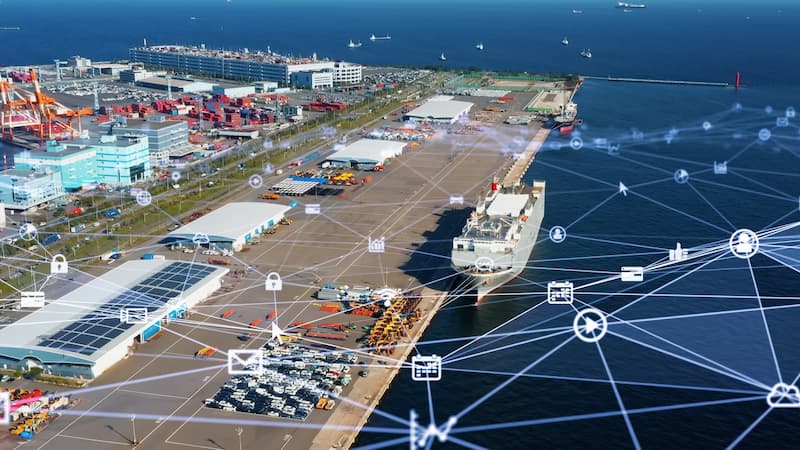Why Maintaining a Strong Supply Chain Is Vital
A steady supply chain is vital to any manufacturer’s daily operations. Consequently, new supply chain options have been created to reinforce their chains against the various unprecedented environmental, economic and political problems.
Despite the events of the past few years, many companies have managed to maintain their crucial supply chains by exploring new methods of fulfilment. This involved re-evaluating every aspect of the chain, from discovering local suppliers to new transportation methods and investigating more environmentally friendly options.
Supply chains have been stabilised for many manufacturers, but this is no guarantee for the future. The only sure way to ensure a robust supply chain is to constantly work on improving your connected chain.
Results of Supply Chain Disruptions
Unprecedented world events have put a significant strain on supply chains and threatened the productivity of many suppliers.
Supply chains have two sides, upstream and downstream, with manufacturers in between. Upstream refers to receiving items such as raw materials, and downstream involves passing on your manufactured goods and fulfilling your client’s orders.
The main challenge that harmed various supply chains was the erratic nature of upstream. Many international companies rely on raw materials from countries like China. As a result, unexpected delivery disruptions would extend lead times, increase costs and affect the chain downstream.
The transportation of goods is still struggling to recover from these disruptions. Ship shortages, port shutdowns, and shipping container shortages create potential delays for supply chains. Whether a Chinese port in a quarantined province or delays at UK’s Felixstowe port, manufacturers need to assess their resources routes for their time and cost efficiency.
These challenges revealed the importance of the international supply chain to the economy. The ripple effect of a supply chain disruption will affect every element of its connected chain and have potentially dire consequences for associated businesses.
Effective supply chain management is crucial for spring manufacturers who wish to avoid as many disruptions as possible and maintain their productivity.
3 Supply Chain Management Phases
Maintaining a solid supply chain involves employing management methods and customising them to best suit your specific operations.
International supply chains are not as reliable as they used to be. Managers can no longer assume the estimates they once did and must reassess the situation with every order. Fortunately, three straightforward techniques will build a resilient supply chain.
- Design is the initial planning stage. An essential time when you’ll create a plan for sourcing the raw materials needed from suppliers and how best to transport them.
- Planning has a similar sounding function as design but with a unique difference. The design will create a detailed plan for a durable supply chain, but planning will add necessary contingencies so you can adapt to any unforeseen changes. Supply and demand is a fluid element of business that changes throughout the year. Therefore, an adaptable supply chain is far more successful than a rigid one resistant to change.
- Execution is how your planned designs will be enacted and their progress. Manufacturers will need to monitor the progress of their sourced materials and distribution to their clients. Any potential disruptions should be identified early and compensated for to prevent the supply chain from weakening.
Supply Chain Management Benefits
As an international springs and pressings manufacturer, we deeply understand how vital a robust supply chain is to maintain high productivity. Every link in the chain needs to be relied upon to create the most robust supply chain possible and not interrupt your planned daily operations.
One valuable technique is diversification. Diversification helps compensate for any erratic behaviour along the supply chain and limits the collateral damage of any disruptions. By committing your upstream materials to a single route, any disruption will be catastrophic to your plans. Diversifying your materials across various transportation routes (or from several suppliers) will guarantee that you receive at least a portion of your raw materials without delay.
Another method is to explore closer suppliers. International logistics are an increasingly complex operation to monitor; the farther your goods travel, the likelihood of problems increases. The distance can also affect the financial cost of delays that will compensate for the problem. With less distance to travel, your chain will encounter fewer obstacles and be more reliable.
A managed supply chain is a strong one. Doing so can increase your chain’s visibility and improve your collaboration with suppliers up and downstream. In addition, persistent corrections to agreed-upon deadlines will lower your business partners’ trust in your company. Effective management will also reduce additional costs and help you maintain an open, honest dialogue with your clients regarding lead times.
European Springs are one of the leading manufacturing companies in Ireland, producing the highest quality springs, pressings and wire forms for a broad range of clients globally.


